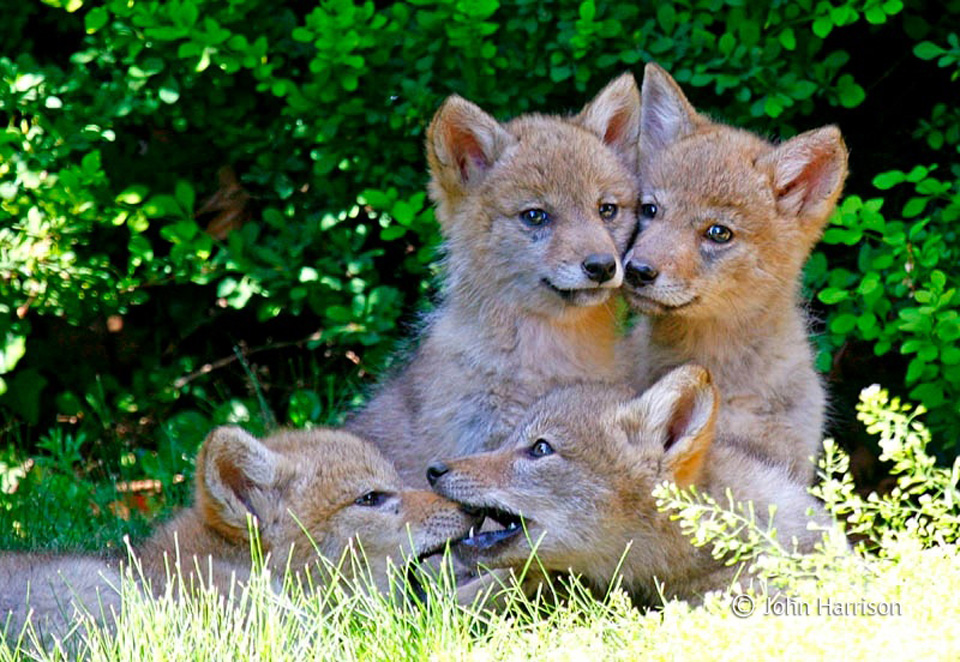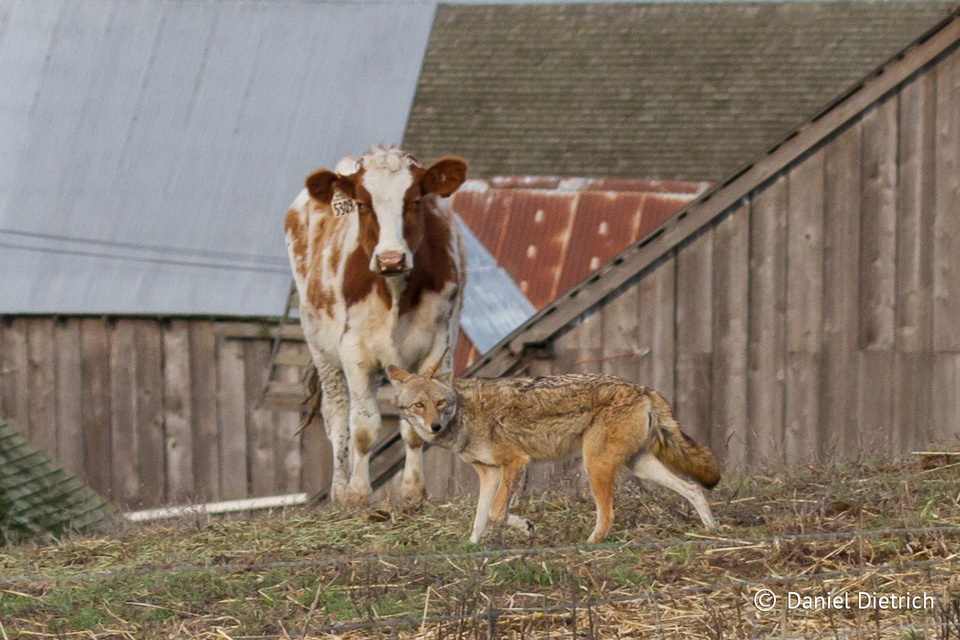Coyote Ecology: The Rites (and Wrongs) of Spring & Early Summer
Springtime and early summer mean birth, growth, and renewal. For coyotes, it can also mean bullets, arrows, and killing contests. Killing contests are permitted in nearly all US states, and they are often held at night during the coyotes’ short window for breeding. This can result in the loss of one or both members of a mated pair, and if the female is killed before weaning, the orphaned pups will be left to starve at the den and the year’s reproductive effort lost. Nevertheless, state wildlife agencies have long turned a blind eye to recreational hunters using trucks, hounds, bait, callers, ATVs and remote cameras to kill coyotes, receiving money and prizes for slaughtering the most or the largest animals. Many hunters claim that the killing helps keep populations manageable. But the impact is exactly the opposite: indiscriminate killing actually causes coyote numbers to increase, and directly threatens ecosystem diversity and stability.
The Price of Resilience
Along with human-caused mortality, factors such as mange, rabies, tick-borne illnesses, worms, quilling by porcupines and encounters with other competitors all take their toll. Yet, coyote populations still thrive. Biologists call this resilience. Ironically, this may be the one trait that creates the most trouble for coyotes. Animals whose numbers grow despite attempts to eradicate them become, in human parlance, varmints. Rather than admire coyote tenacity, humans despise their resistance to control. We should consider this point closely.
Self-Regulation
How is it that coyotes do not reproduce out of control? The answer is self-regulation. For coyotes, self-regulation occurs most commonly through territoriality. A territory is not just habitat. It is a defended area that contains all of the food, water, cover and den sites a pack needs to sustain itself. Depending on the time of year, 70 to 90 percent of individual coyotes will belong to a territorial group, with the remainder being solitary or transient. Coyote numbers are regulated within their territory by prey abundance and availability of other resources. If there is not enough food, then the social system can break down due to internal conflict over resources — so food regulates the size of the pack.
Further, adults defend and maintain non-overlapping territories by engaging in highly ritualized behaviors, such as scent-marking, howling, and non-lethal aggression — similar to male birds singing or sparring in the spring. Competition among adult coyotes can be intense since obtaining and maintaining a territory confers survival, which facilitates reproduction and successful passing of genes to future generations. For this reason, negative encounters between coyotes, pets and people may increase during breeding season– so be mindful.
A Strict Breeding Season
Coyotes breed between January and March. Female coyotes have a 5-7 day heat period occurring only once annually during the breeding season. This abbreviated period of receptivity assures that two thirds of female coyotes never breed. It also ensures that there is a much narrower chance of breeding with other wild or domestic canines.
Courtship between an already mated pair may begin in early winter, and the pair will mate whenever her heat season begins, usually early- to mid-February. This leads to an average litter of 4-6 pups 63 days later. Most female coyotes are restricted from successful breeding by a dominance hierarchy; females that are either subordinate or do not belong to a territory do not tend to have pups, while dominant females do. This is another way in which coyote populations self-regulate.
Monogamy
Coyotes are believed to mate for life. A breeding pair forms the basis of a pack, which initially inhabits a territory. If at maturity some pups forego dispersal (leaving the pack to find another territory), they will become part of the pack. Usually only the breeding pair mate and have a litter of pups each year: A right that is defended by the breeding female who will interfere with any of her daughters’ attempts to breed with any male. Thus, any young coyote of either sex wishing to breed must disperse from the territory of their birth to find a mate. This is critical to maintaining the territory’s long-term support of the pack. This is also one of the reasons why wholesale killing creates problems – if either or both of the breeders/alphas are removed, there is no social control on the remaining pack members.
Monogamy, dominance and territoriality reinforce each other. The breeding pair’s monogamy and dominance results in only one litter each spring, and territoriality reinforces the fact that only a limited number of individuals will reside in any given area. The coyote population is thus naturally controlled.
Human-Caused Coyote Populations
Mortality is high among coyote pups born in the spring: 50 to 75 percent do not survive until the fall dispersal season. When coyote numbers continue to grow despite such high natural mortality, we must look at the impact of human actions. We will see that through evolutionary trial and error, social structure and biology determine reproductive rates and mortality but when we remove the structural controls by killing one or both of the breeding pair, more coyotes may reproduce more frequently, resulting in more coyotes in the territory than can be supported.
In short, the indiscriminate killing of coyotes interrupts the natural checks and balances of the coyote social system with resulting impacts on the ecosystem, often resulting in more, rather than fewer, coyotes. This is further complicated by the fact that inexperienced sub-adult coyotes quickly become parents and may end up seeking unwise food sources for their young such as livestock or domestic pets. It is easy to see that this cycle may become self-perpetuating: coyotes become unwitting problems for humans; they are then further targeted; social structures break down more, which results in more coyotes and more problems, etc.
Coexistence with coyotes can be tricky. It requires rethinking our place in the ecosystem. To date, people have too quickly decided that we must manage the system by killing predators, despite having very little understanding of how evolution has put checks and balances in place. We have, in fact, made problems worse for ourselves, for coyotes, other predators, and their prey by our lethal approach. We believe the key is to better understand and work with coyote biology and ecosystems, and to recognize that humans are not separate from nature — we are part of it, and every one of our actions can send an unpredictable ripple through the ecosystem. Once we understand that a specific action may end in wider destruction, as with the indiscriminate killing of coyotes, should we not act to avoid that destruction? Science has shown that coyotes are here to stay and allowing them to establish stable packs supports a functional ecosystem that reduces the risk of negative encounters with people, pets, and livestock. Moreover, such an approach is our only option for achieving a sustainable and peaceful future.
Contributors: Camilla Fox, Shelley Alexander and Bob Crabtree






